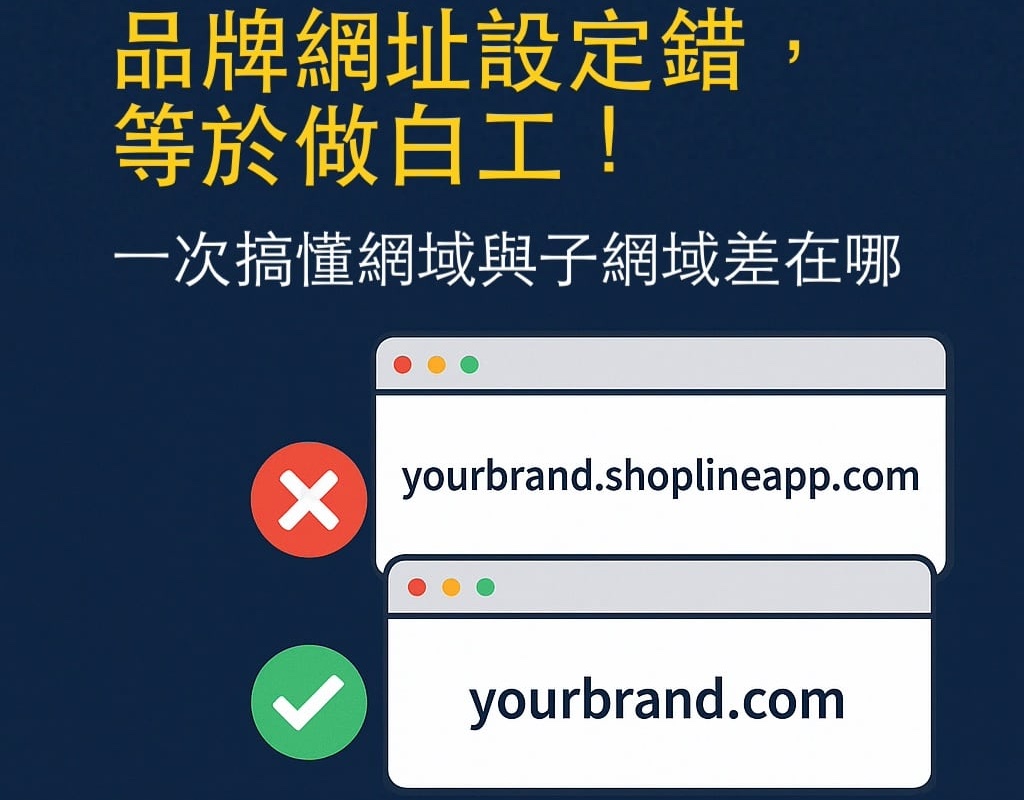
yourbrand.shoplineapp.com. Although it’s convenient, you’re effectively working for the platform by giving them the traffic and search rankings you’ve worked hard to earn.Using a platform subdomain incorrectly can lead to:
The only correct practice is to purchase your own primary domain (e.g. yourbrand.com).
If your brand already has a corporate site and uses an external e-commerce platform, we recommend hosting your store on a subdomain you control, such as shop.yourbrand.com. You can also use subdomains for other sections like a blog or support (e.g. blog.yourbrand.com).
Yes. A platform subdomain channels SEO authority to the platform (e.g. shoplineapp.com), and you can’t reclaim it for your brand. We recommend using your own domain to consolidate your SEO efforts.
A subdomain is an independent branch outside the main domain (e.g. blog.brand.com), while a subdirectory is part of your site’s internal structure (e.g. brand.com/blog). For SEO, subdirectories are easier for centralizing authority, but subdomains offer better categorization and management. Each approach has its trade-offs depending on your strategy.
Still using a platform subdomain? Don’t miss out on growth opportunities for your brand! If you have any questions about domain setup, feel free to contact us. We can help provide solutions or guide you through the process.